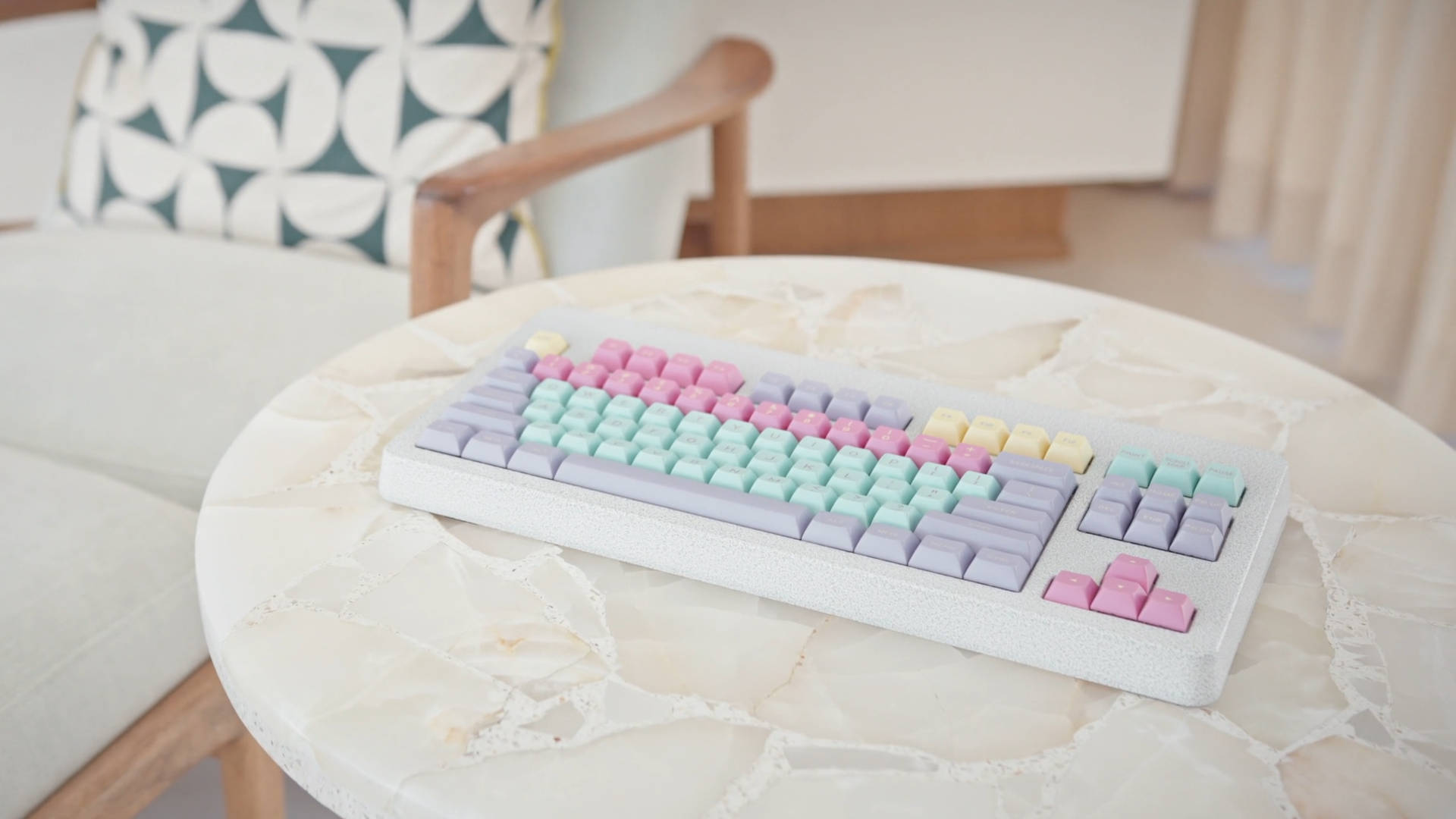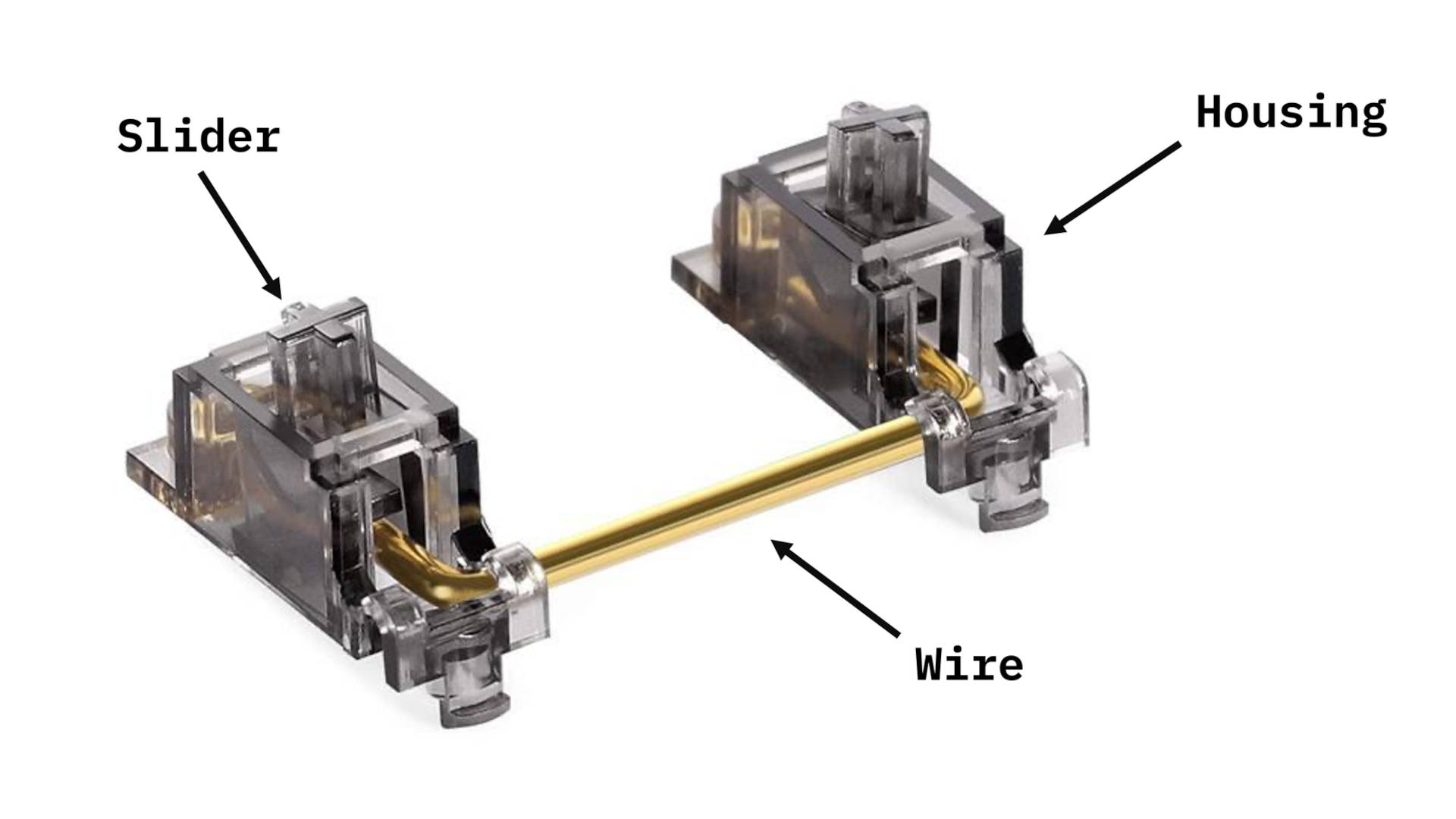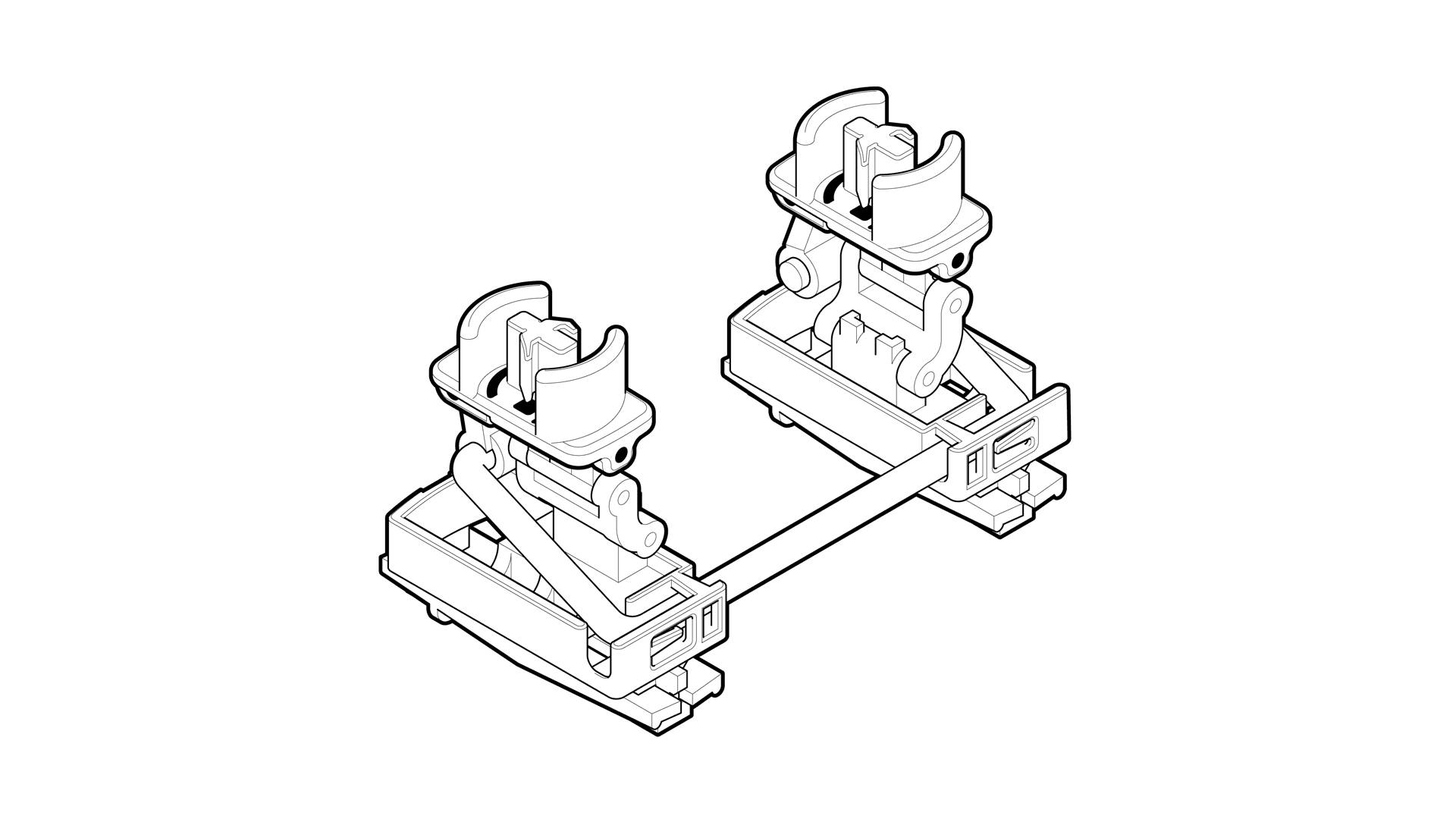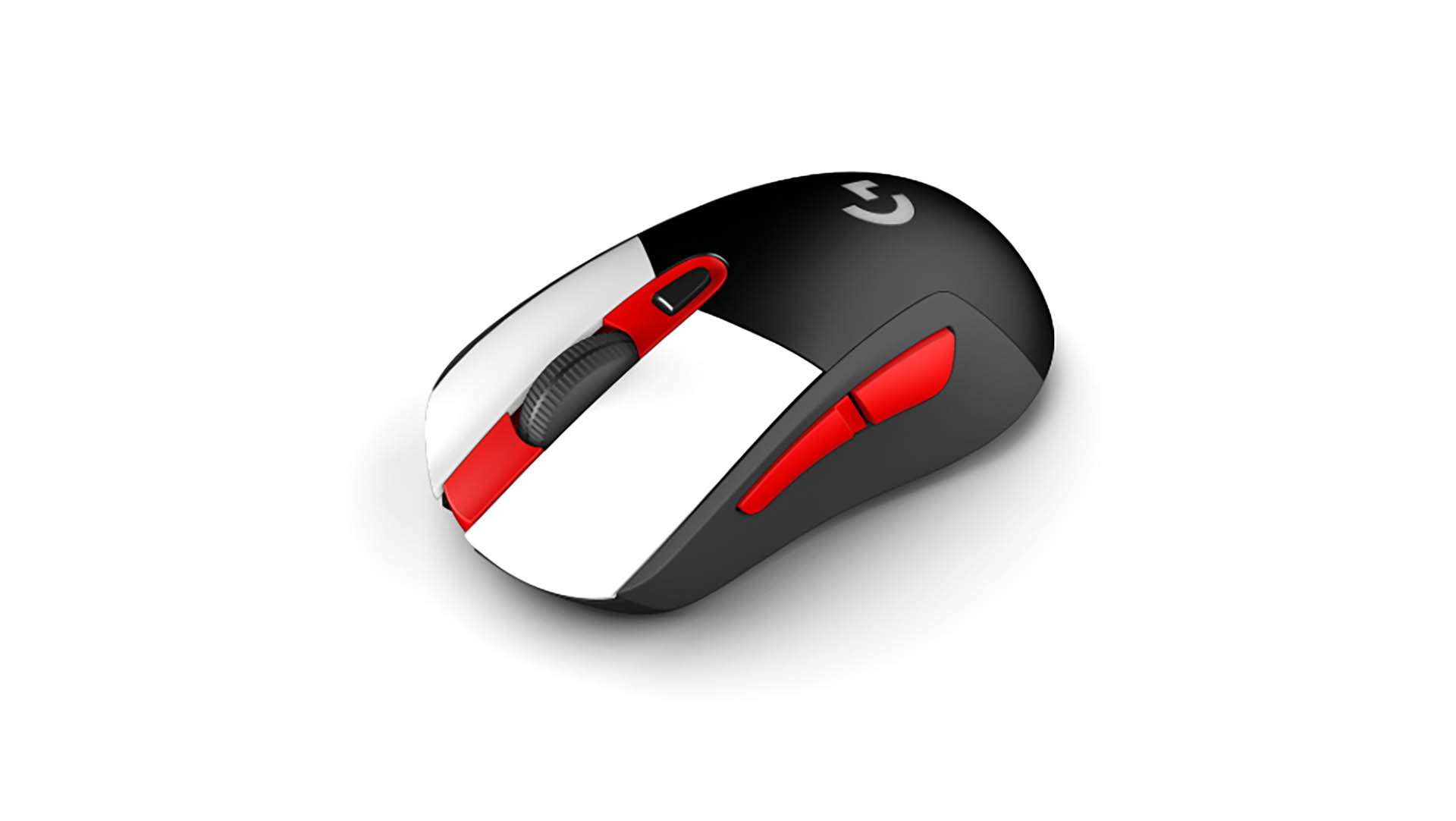One boutique keyboard maker spent years engineering the ultimate stabilizer by 'recklessly training a personal cash bazooka on the question'
John Wick level of focus, commitment, and sheer will just to get the perfect keyboard clack.

In search of typing utopia, one designer has gone to extraordinary lengths to have the perfect keyboard under their fingers. After five years of hard work and project expenses well into the six-figure region, the ultimate key stabilizer has been created.
If you're a fan of mechanical keyboards, you'll know there's not only a huge variance between the multitude of models on offer, in terms of how they sound and feel, but the switches and keys themselves also vary quite a bit. The space bar, shift keys, and other long buttons often sound dissimilar because they rock about when pressed.
Some of the issues can be mitigated by carefully lubricating and fine-tuning the stabilizing mechanism, but that's just masking the fact that they're not well designed in the first place.
Well, that's the opinion of designer Ryan Norbaurer, owner of the eponymously named boutique keyboard firm. Rather than simply accepting that's just how long keys work, they set about correcting the various flaws they saw in other stabilizer designs.
You can see what a typical stabilizer arrangement looks like in the images below. To ensure something like a space bar moves up and down uniformly, no matter where you press on it, the switches underneath the bar are connected via a short rod. This bar rattles against the various parts of the switches, creating an unpleasant sound, plus the entire design itself is quite noisy.
Norbauer explained how they set about tackling the problem in their journal, and it's a long and very detailed description of it all. If the length of this project record is in any way proportional to the effort they put into the stabilizer, then it truly was a Herculean task.
Suffice to say that they endured multiple issues but by being "doggedly, irrationally persistent" and "recklessly training a personal cash bazooka" on the project, they succeeded in creating the perfect and patented stabilizer.
The biggest gaming news, reviews and hardware deals
Keep up to date with the most important stories and the best deals, as picked by the PC Gamer team.

A traditional key stabilizer mechanism

The Norbauer key stabilizer mechanism

Best gaming mouse: the top rodents for gaming
Best gaming keyboard: your PC's best friend...
Best gaming headset: don't ignore in-game audio
The solution to all of this is heroically complex, with at least 21 separate parts, with each switch housing containing 10 apiece. Assembling just one of those houses takes around 30 minutes.
That's far too long for general manufacturing, but it's also very lengthy for a small boutique keyboard maker, and I can't imagine that Norbauer is planning on implementing the design for all the models they sell.
But then again, if there's one thing I've learned about mechanical keyboard fans is that they're willing to invest enormous sums of time, effort, and money into having the perfect platform with which to work and game. And if that means waiting even longer or paying even more to have the ultimate clack, then that's exactly what they'll do.

Nick, gaming, and computers all first met in 1981, with the love affair starting on a Sinclair ZX81 in kit form and a book on ZX Basic. He ended up becoming a physics and IT teacher, but by the late 1990s decided it was time to cut his teeth writing for a long defunct UK tech site. He went on to do the same at Madonion, helping to write the help files for 3DMark and PCMark. After a short stint working at Beyond3D.com, Nick joined Futuremark (MadOnion rebranded) full-time, as editor-in-chief for its gaming and hardware section, YouGamers. After the site shutdown, he became an engineering and computing lecturer for many years, but missed the writing bug. Cue four years at TechSpot.com and over 100 long articles on anything and everything. He freely admits to being far too obsessed with GPUs and open world grindy RPGs, but who isn't these days?

